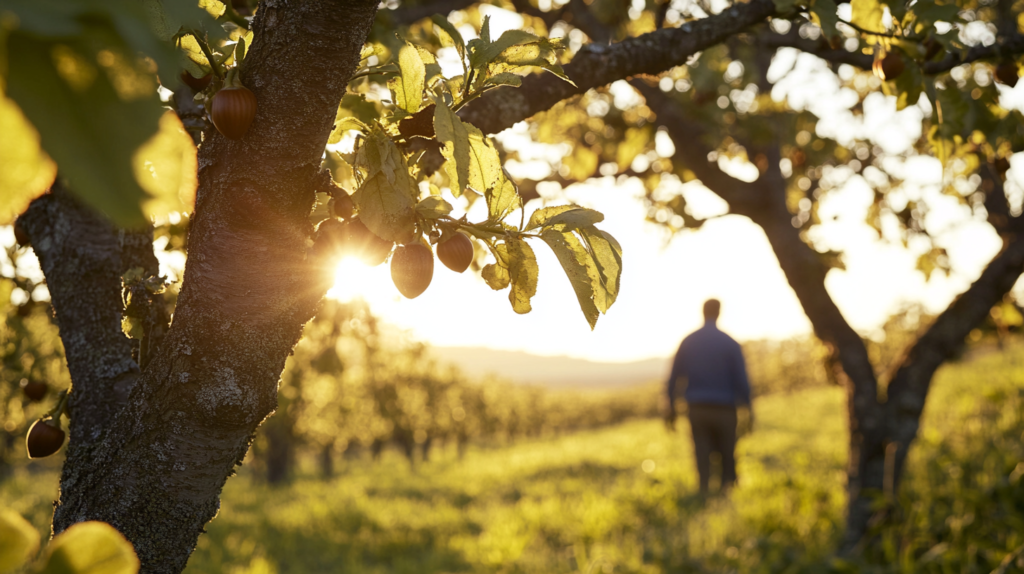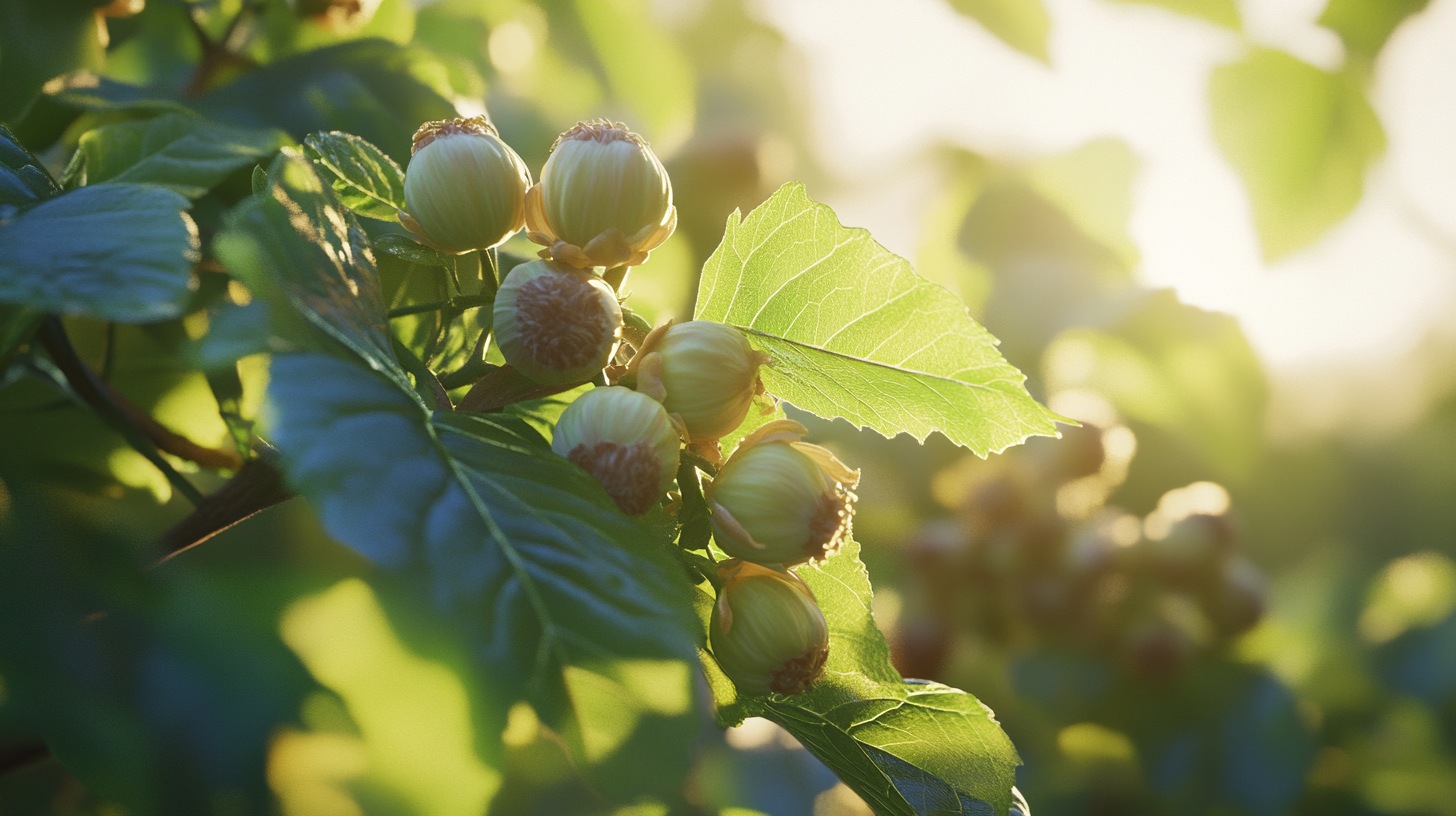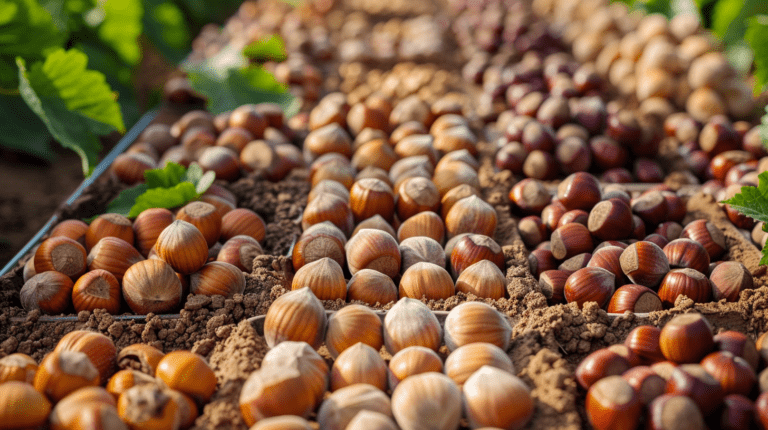Blight Resistance in Hazelnuts: Key Strategies to Combat Eastern Filbert Blight
Eastern Filbert Blight (EFB) is a significant threat to hazelnut cultivation, particularly in North America. This fungal disease, caused by Anisogramma anomala, has been a primary limitation to European hazelnut (Corylus avellana) production in eastern North America and has also impacted orchards in the Pacific Northwest2. Understanding blight resistance in hazelnuts is crucial for developing effective strategies to combat this disease and ensure the continued growth of the hazelnut industry.
The Impact of Eastern Filbert Blight
Eastern Filbert Blight first made its way to the Northwest in the 1960s3. Since then, it has posed a significant challenge to hazelnut growers, causing branch dieback, yield decline, and in severe cases, plant death2. The fungus primarily affects new growth in the spring, with symptoms becoming visible only 12 to 18 months after initial infection1.
The impact of EFB on the hazelnut industry has been substantial. In British Columbia, for example, the crop was significantly reduced due to its susceptibility to EFB, which was introduced in 20051. Similarly, in Oregon’s Willamette Valley, where 99% of the United States hazelnut crop is produced, EFB has become a persistent threat to commercial production4.
Resistance Mechanisms
Research has identified several resistance mechanisms in hazelnuts that can help combat Eastern Filbert Blight. Two primary categories of resistance have been developed:
- Gasaway Gene Resistance: This is a genetic component that carries a very high level of resistance to the disease1. The Gasaway gene confers resistance through a dominant allele at a single locus on linkage group 6 (LG6) of the hazelnut genome4.
- Quantitative Resistance: This type of resistance results in fewer and smaller infections than more susceptible varieties1. While not providing complete immunity, it can significantly reduce the impact of EFB.
Both of these resistance mechanisms can decrease the effects of EFB, contributing to the creation of economically profitable hazelnut orchards1.

Breeding for Resistance
Breeding programs, particularly at Oregon State University (OSU), have been instrumental in developing EFB-resistant hazelnut cultivars. These efforts have focused on incorporating resistance genes from various sources into commercially viable varieties1,4.
– Key Findings in Breeding Research:
- New Resistance Sources: Recent studies have identified several new sources of EFB resistance, including selections from Russia, Crimea, Michigan, and South Korea4. These new sources provide valuable genetic diversity for breeding programs.
- Interspecific Hybrids: Researchers have explored interspecific hybrids (Corylus americana × C. avellana) as a means to combine EFB resistance with wider adaptability and larger nuts2. Some of these hybrids have shown promising levels of resistance.
- American Hazelnut: Despite its tiny, thick-shelled nuts, Corylus americana has proven to be a valuable source of EFB resistance and climatic adaptation2. In one study, 95.3% of evaluated C. americana plants remained completely free of EFB2.
- Molecular Markers: The development of Simple Sequence Repeat (SSR) markers has greatly aided breeding efforts. These markers allow for more efficient selection of resistant plants and have been used to map resistance genes to specific chromosomal regions4.
(To learn more about different hazelnut varieties, check out Exploring the Different Types of Hazelnuts.)
Management Strategies
While breeding for resistance is the most effective long-term strategy, several management practices can help control EFB in existing orchards:
- Pruning: Removing infected branches can help reduce the spread of the disease within an orchard1.
- Fungicide Application: Regular spraying with appropriate fungicides can help protect trees from infection13.
- Resistant Cultivars: Planting EFB-resistant cultivars is the most effective strategy for managing the disease1.
- Integrated Approach: Combining resistant cultivars with other management practices provides the best protection against EFB1.
Challenges and Future Directions
Despite significant progress in developing EFB-resistant hazelnuts, several challenges remain:
- New Strains: A new strain of EFB that overcomes the resistance in previously resistant cultivars has been discovered in Oregon3. This highlights the ongoing need for continued research and breeding efforts.
- Variability in Resistance: Some cultivars, like Sacajawea, have shown quantitative resistance but not immunity, indicating a need for additional EFB management strategies1.
- Genetic Diversity: While significant progress has been made in breeding resistant cultivars, there is a need to broaden the genetic base of resistance to ensure long-term durability24.
- Climate Adaptation: As climate change impacts growing regions, there is a need to develop cultivars that combine EFB resistance with adaptation to changing environmental conditions2.
Conclusion
Understanding blight resistance in hazelnuts is crucial for the future of hazelnut cultivation, particularly in regions affected by Eastern Filbert Blight. Through a combination of genetic research, breeding programs, and integrated management strategies, significant progress has been made in developing resistant cultivars and effective control methods.
The discovery of new resistance sources and the development of molecular tools like SSR markers provide promising avenues for future breeding efforts. However, the emergence of new EFB strains underscores the need for ongoing research and the development of diverse resistance mechanisms.
As the hazelnut industry continues to grow, with Oregon’s acreage expanding from about 25,000 acres in the late 1980s to nearly 90,000 acres today3, the importance of EFB resistance cannot be overstated. By continuing to invest in research and applying integrated management approaches, the hazelnut industry can work towards sustainable production in the face of this persistent disease threat.
The future of hazelnut cultivation will likely depend on the successful integration of multiple resistance sources, advanced breeding techniques, and adaptive management practices. As our understanding of blight resistance in hazelnuts continues to evolve, so too will our ability to protect and expand this valuable crop.
Sources:
[1] https://bcfoodweb.ca/briefs/bringing-hazelnuts-bc-eastern-filbert-blight-resistant-cultivars
[2] https://journals.ashs.org/jashs/view/journals/jashs/145/3/article-p162.xml
[3] https://www.opb.org/article/2024/03/15/hazelnut-blight-disease-new-strain-oregon/
[4] https://www.frontiersin.org/journals/plant-science/articles/10.3389/fpls.2021.684122/full






